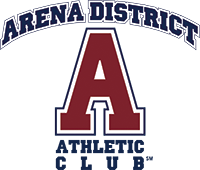
Understanding Your Macronutrients
CARBOHYDRATES
Carbohydrates include foods composed of starches, sugar and/or fiber. They are the most common source of energy found in food. We can reap the health benefits of eating carbohydrates by choosing those that are full of fiber. These carbohydrates get absorbed slowly into our systems, avoiding spikes in blood sugar levels. Examples: whole grains, vegetables, fruits, and beans.
Whole, Refined/Re-Fortified and Enriched Grains: What’s the Difference?
Whole Grains: Include the entire grain seed, usually called the kernel. The kernel consists of three components – bran, germ and endosperm. If the kernel has been cracked, crushed or flaked, then, it’s to be called a “whole Grain” a food must retain the same relative proportions of these components as they exist in the intact grain. Whole grains are consumed either as a single food (e.g., wild rice, or popcorn) or as an ingredient in foods (e.g., in cereals, breads, and crackers.)
Examples of Whole Grain Ingredients: Buckwheat, bulgur, millet, oatmeal, quinoa, rolled oats, brown or wild rice, whole-grain barley, whole rye, and whole wheat.
Refined and Re-Fortified Grains: Unfortunately this rules out a majority of the carbohydrates found on supermarket shelves. Refined and re-fortified grains are grain-based foods like certain breakfast cereals, pastas, and rice products that have been refined such that the naturally occurring fiber, vitamins, and minerals have been removed. This is done to give grains a finer texture and improve their shelf life. Companies then replace the fiber and synthetic versions of the vitamins and minerals that were initially removed. Sometimes (and this is really sneaky) they put everything back in naturally occurring ratios so that they can still claim the food contains ‘whole grains’.
Enriched Grains are grain products with B vitamins (thiamin, riboflavin, niacin, folic acid) and iron added. Most refined-grain products are enriched.
PROTEIN
All foods made from meat poultry, seafood, beans and peas, eggs, processed soy products, nuts, and seeds are considered part of the Protein Foods Group. These foods contribute B vitamins (niacin, thiamin, riboflavin, and B6), vitamin E, iron, zinc, and magnesium to the diet. The Fats in meat, poultry and eggs are considered solid fats, while the fats in seafood, nuts and seeds are considered oils. Meat and poultry should be consumed in lean forms to decrease intake of solid fats.
The New Seafood Recommendations
According to the Dietary Guidelines for Americans, 2010, Americans should be consuming an intake of 8 ounces or more of a variety of seafood’s a week, which is an average of 20% of the recommended protein intake. Consuming 8oz per week will provided an average consumption of 250mg per day of EPA and DHA, and is associated with reduced cardiac deaths among individuals with and without pre-existing cardiovascular disease.
Some examples of seafood that are high in EPA and DHA and are low in Mercury include salmon, anchovies, herring, sardines, pacific oysters, trout, and Atlantic and Pacific mackerel (not King Macerel).
FATS
Fats are an important part of a healthy diet: They provide essential fatty acids, keep our skin soft, deliver fat-soluble vitamins (A, D, E, and K) and are a great source of energizing fuel. But it’s easy to get confused about good fats vs. bad fats, how much fat we should eat, how to avoid artery-clogging trans-fats.
The Bad Fats: Saturated and Trans fats
Saturated Fat: Saturated fat is solid at room temperature, which is why it is also known as “solid fat.” It is mostly in animal foods, such as milk, cheese, and meat. Poultry and fish have less saturated fat than red meat. Saturated fat is also in tropical oils, such as in coconut oil, palm oil, and cocoa butter. You’ll find tropical oils in many snacks and in nondairy foods, such as coffee creamers and whipped toppings. Foods made with butter, margarine, or shortening (cakes, cookies, and other desserts) has a lot of saturated fat. Saturated fat can raise your cholesterol. A healthy diet has less than 10% of daily calories from saturated fat.
Trans Fat: This is a fat that has been changed by a process called hydrogenation. This process increases the shelf life of fat and makes the fat harder at room temperature. Harder fat makes crispier crackers and flakier pie crusts. You’ll find trans fats in:
- Processed foods.
- Snack foods, such as chips and crackers.
- Cookies.
- Some margarine and salad dressings.
- Foods made with shortening and partially hydrogenated oils.
Research has shown that even small amounts of artificial trans fats can increase the risk for heart disease by increasing LDL “bad” cholesterol and decreasing HDL “good” cholesterol. The American Heart Association (AHA) recommends limiting trans fat to less than 2 grams per day, including the naturally occurring trans fats. The U.S. Dietary Guidelines simply recommend keeping trans fats consumption as low as possible.
The Good Fats: Unsaturated Fats – Monounsaturated and Polyunsaturated
Unsaturated Fat: Unsaturated fat is liquid at room temperature. It is mostly in oils from plants. If you eat unsaturated fat instead of saturated fat, it may help improve your cholesterol levels. Try to eat mostly unsaturated fats. Monounsaturated fat and polyunsaturated fat are types of unsaturated fat.
Monounsaturated Fat: This fat is in vegetable oils, such as canola, olive, and peanut oils. Eating foods that are high in monounsaturated fats may help lower your “bad” LDL. Monounsaturated fats may also keep “good” HDL Cholesterol levels high. This may lower your risk of heart disease. But eating more unsaturated fat without cutting back on saturated fat may not lower your cholesterol.
Polyunsaturated Fat: This type of fat is mainly in vegetable oils such as safflower, sunflower, sesame, soybean, and corn oils. Polyunsaturated fat is also the main fat found in seafood. Eating polyunsaturated fat in place of saturated fat may lower LDL cholesterol. The two types of polyunsaturated fats are omega-3 and omega-6 fatty acids.
- Omega-3 fatty acids are found in foods from plants like soybean oil, canola oil, walnuts, and flaxseed. They are also found in fatty fish and shellfish as eicosapentaenoic acid (EPA) and docosahexaenoic acid (DHA). Salmon, anchovies, herring, sardines, Pacific oysters, trout, Atlantic mackerel, and Pacific mackerel are high in EPA and DHA and lower in mercury. A healthy diet includes 8 ounces or more of these types of fish a week, averaging 250 mg a day of these omega-3 fatty acids.
- Omega-6 fatty acids are found mostly in liquid vegetable oils like soybean oil, corn oil, and safflower oil.
| Saturated Fats or Trans Fatty Acids | Polyunsaturated Fats | Monounsaturated Fats |
| Butter | Corn oil | Canola oil |
| Lard | Fish oils | Almond oil |
| Meat, lunchmeat | Soybean oil | Walnut oil |
| Poultry, poultry skin | Safflower oil | Olive oil |
| Coconut products | Sesame oil | Peanut oil |
| Palm oil, palm kernel oil and products | Cottonseed oil | Avocado |
| Dairy foods (other than skim) | Sunflower oil | Olives |
| Partially hydrogenated oils | Nuts and seeds | Peanut butter |




